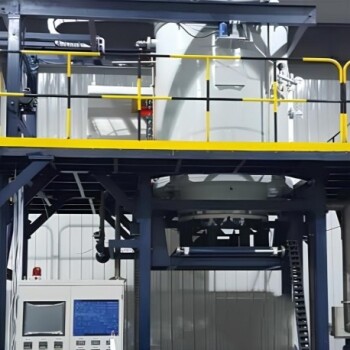Vacuum piping refers to a network of conduits or tubes used in vacuum systems to transport gases, particles, or fluids under low-pressure conditions. These pipes are essential components in vacuum systems, connecting various elements such as vacuum pumps, chambers, valves, and measurement equipment. Vacuum piping ensures the efficient distribution of suction or vacuum pressure, enabling the system to function effectively. It is designed to minimize leaks, vibrations, and contamination, often using specialized materials and connectors to maintain the integrity of the vacuum environment. Vacuum piping is widely used in applications ranging from industrial processes to scientific research, where maintaining precise vacuum levels is critical.
Key Points Explained:

-
Definition and Purpose of Vacuum Piping:
- Vacuum piping is a system of conduits or tubes that connect various components in a vacuum system, such as pumps, chambers, and valves.
- Its primary purpose is to transport gases, particles, or fluids under low-pressure conditions, ensuring the system operates efficiently.
- It plays a crucial role in maintaining the vacuum environment by distributing suction or vacuum pressure effectively.
-
Components Connected by Vacuum Piping:
- Vacuum Pumps: Devices like mechanical pumps, diffusion pumps, or turbomolecular pumps are connected via vacuum piping to create and maintain the vacuum.
- Vacuum Chambers: These are the primary spaces where the vacuum is maintained, and piping connects them to the pumps and other components.
- Valves and Manifolds: Vacuum piping connects valves (e.g., isolation valves, bleed valves) and manifolds, which control the flow of gases and maintain pressure levels.
- Measurement Equipment: Devices like vacuum gauges or molecule counters are integrated into the system through piping to monitor vacuum levels.
-
Design and Material Considerations:
- Leak Prevention: Vacuum piping is designed to minimize leaks, which can compromise the vacuum environment. High-quality seals and connectors are used.
- Vibration Reduction: Metal corrugated hoses with quick connectors are often used to connect pumps and piping, reducing vibrations that could affect system performance.
- Material Selection: Pipes are typically made from materials like stainless steel, which are resistant to corrosion and can withstand the stresses of vacuum conditions.
-
Applications of Vacuum Piping:
- Industrial Processes: Used in manufacturing, semiconductor production, and chemical processing, where precise vacuum levels are required.
- Scientific Research: Essential in laboratories for experiments involving vacuum chambers, such as in physics or material science.
- Central Vacuum Systems: In residential or commercial settings, vacuum piping connects wall inlets to a central vacuum unit, enabling efficient cleaning.
-
System Integration and Functionality:
- Series or Parallel Pump Configurations: In some systems, multiple pumps are used, either in series or parallel, to achieve the desired vacuum levels. Piping connects these pumps to the main system.
- Maintenance of Vacuum Levels: Properly designed vacuum piping ensures that the system maintains consistent vacuum levels, which is critical for the success of many applications.
-
Installation and Maintenance:
- High Precision Machining: Components like flanges and connectors must be machined with high accuracy to ensure a tight seal and prevent leaks.
- Regular Inspection: Vacuum piping systems require regular inspection and maintenance to ensure they remain leak-free and functional.
- Operational Procedures: Proper operational procedures, including the use of traps and valves, are essential to maintain the integrity of the vacuum system.
In summary, vacuum piping is a critical component of vacuum systems, enabling the efficient transport of gases and particles under low-pressure conditions. Its design, material selection, and integration with other components ensure the system operates effectively and maintains the required vacuum levels. Whether in industrial, scientific, or residential applications, vacuum piping plays a vital role in the functionality and success of vacuum systems.
Summary Table:
| Aspect | Details |
|---|---|
| Definition | Conduits or tubes for transporting gases, particles, or fluids under vacuum. |
| Key Components | Vacuum pumps, chambers, valves, manifolds, and measurement equipment. |
| Design Considerations | Leak prevention, vibration reduction, and corrosion-resistant materials. |
| Applications | Industrial processes, scientific research, and central vacuum systems. |
| Maintenance | High precision machining, regular inspection, and proper operational procedures. |
Need a reliable vacuum piping solution for your system? Contact us today to learn more!












